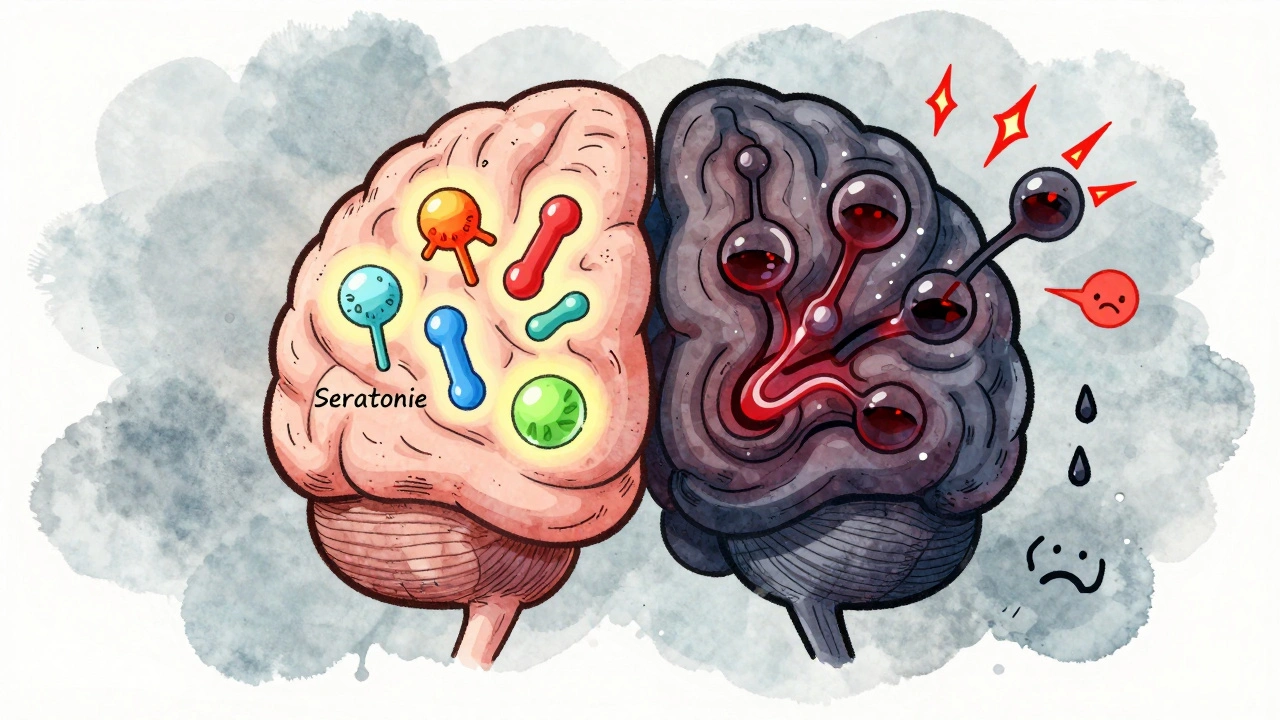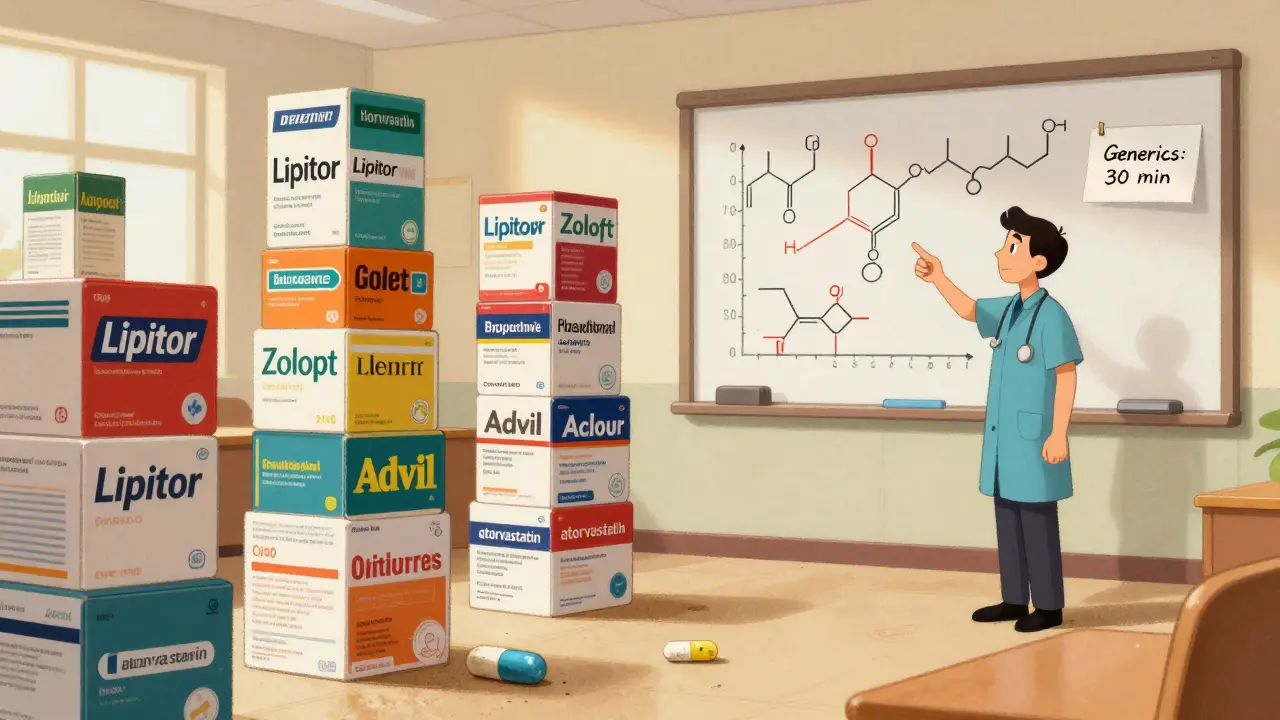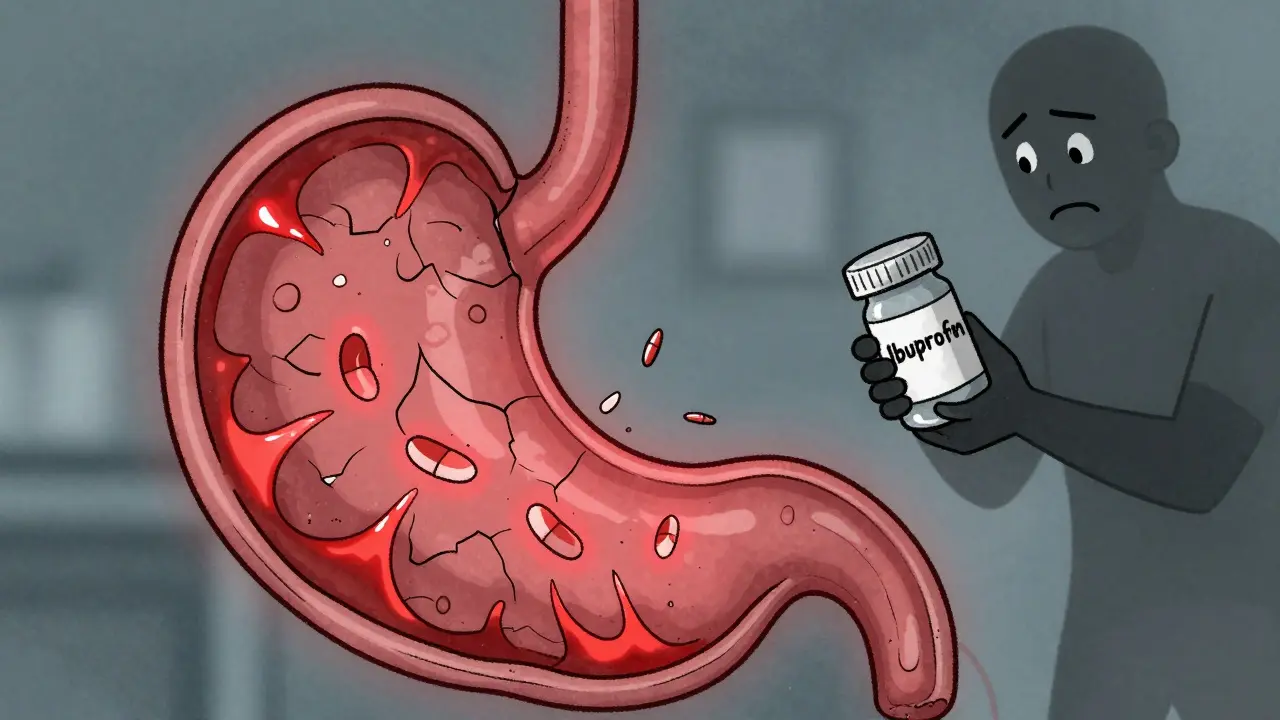Motion Sickness Medication Selector
Select Your Travel Scenario
Need Quick Relief?
Alertness Requirements
Age Group
Recommended Medication:
Why This Choice:
If you’ve ever felt queasy on a boat, in a car, or after a flight, you know how quickly nausea can ruin a day. Antivert is the over‑the‑counter name most people recognize for the antihistamine meclizine, but it’s far from the only option on the market. This guide breaks down how Antivert stacks up against the most common alternatives, so you can pick the right dose, avoid unwanted side effects, and stay steady on whatever ride you’re on.
Quick Summary
- Antivert (meclizine) offers long‑lasting relief with relatively mild drowsiness.
- Dramamine (dimenhydrinate) works faster but can make you sleepy.
- Scopolamine patches provide all‑day coverage, ideal for travel.
- Promethazine is powerful but carries a higher risk of sedation and anticholinergic effects.
- Natural ginger and betahistine are gentler alternatives for mild symptoms.
How Antivert (Meclizine) Works
Meclizine belongs to the first‑generation antihistamine class. It blocks H1 receptors in the brain’s vestibular system, which reduces the signal that tells your body you’re moving when you’re actually still. By dampening this mismatch, meclizine eases both vertigo and nausea. The drug’s half‑life is about 6hours, so a single 25mg tablet often covers a full day of travel.
Key Alternatives
Below are the most widely used substitutes, each with a brief overview.
Dimenhydrinate - commonly sold as Dramamine - is another antihistamine that hits the H1 receptors a bit harder. It starts working within 30minutes, which is useful for sudden motion sickness, but the trade‑off is more pronounced drowsiness.
Scopolamine, marketed as a transdermal patch (often called Transderm Scop), delivers a steady dose through the skin. The patch takes about an hour to reach full effect and can last up to 72hours, making it a favorite for long trips or cruise passengers. However, it may cause dry mouth and blurred vision.
Promethazine (brand name Phenergan) is a sedating antihistamine that also blocks dopamine receptors. Its anti‑nausea power is strong, but it can knock you out for several hours, so it’s best reserved for severe cases or when you don’t need to stay alert.
Ondansetron (known as Zofran) is a serotonin‑5HT3 antagonist prescribed for chemotherapy‑induced nausea but also used off‑label for motion sickness. It works quickly, often within 15minutes, and has minimal sedation, but it requires a prescription and can cause constipation.
Diphenhydramine (sold as Benadryl) is a classic antihistamine that many people already have at home. It blocks H1 receptors like meclizine but is notorious for heavy sleepiness, which can be a problem if you need to drive.
Ginger is a natural root that has been studied for its anti‑nausea properties. Available as capsules, candies, or tea, ginger provides mild relief with virtually no sedation, though its effect is weaker than prescription‑grade meds.
Betahistine (brand Serc) works by improving blood flow in the inner ear. It’s primarily used for Ménière’s disease but can help with vertigo‑related nausea. Side effects are usually limited to mild headache.
Side‑Effect Snapshot
Every drug has a trade‑off. Antivert’s most common side effect is mild drowsiness, reported in about 10% of users. Dimenhydrinate can cause stronger sedation, dry mouth, and occasionally blurred vision. Scopolamine tops the list for dry mouth, reduced sweating, and occasional vision changes. Promethazine carries a higher risk of constipation and, in rare cases, severe allergic reactions. Ondansetron’s main concerns are headache and constipation. Diphenhydramine is the most sedating of the bunch. Ginger and betahistine are the gentlest, with side effects limited to heartburn (ginger) or mild headache (betahistine).

Comparison Table
| Medication | Drug Class | Typical Dose | Onset | Duration | Common Side Effects | Pros | Cons |
|---|---|---|---|---|---|---|---|
| Antivert (Meclizine) | First‑gen antihistamine | 25mg tablet | 30-60min | Up to 24h | Mild drowsiness, dry mouth | Long‑acting, OTC | May cause slight sedation |
| Dimenhydrinate (Dramamine) | First‑gen antihistamine | 50-100mg | 15-30min | 4-6h | Pronounced drowsiness, dry mouth | Fast relief | Heavier sedation |
| Scopolamine (Patch) | Anticholinergic | 1.5mg patch | ≈1h | 72h | Dry mouth, blurred vision | All‑day coverage | Skin irritation, prescription in some regions |
| Promethazine (Phenergan) | First‑gen antihistamine + dopamine blocker | 12.5-25mg | 30min | 6-8h | Strong sedation, constipation | Powerful anti‑nausea | Too sedating for most travel |
| Ondansetron (Zofran) | 5‑HT3 antagonist | 4-8mg PO | ≈15min | 12h | Headache, constipation | Minimal drowsiness | Prescription only, cost |
| Diphenhydramine (Benadryl) | First‑gen antihistamine | 25-50mg | 15-30min | 4-6h | Heavy drowsiness, dry mouth | Widely available | Too sedating for active travel |
| Ginger (root) | Natural anti‑emetic | 500-1000mg | 30-45min | 4-6h | Heartburn, mild gas | Non‑sedating, OTC | Less potent than drugs |
| Betahistine (Serc) | Histamine‑like vasodilator | 8-16mg | 1-2h | 6-8h | Headache, mild GI upset | Improves inner‑ear blood flow | Prescription in many countries |
Choosing the Right Option for You
Think about three practical factors before reaching for a pill:
- How quickly you need relief. If you’re already feeling queasy, a fast‑onset drug like dimenhydrinate or ondansetron is ideal. For planned trips, a slower‑acting but longer‑lasting choice like Antivert or a scopolamine patch works better.
- How much you can tolerate sedation. Drivers, pilots, or anyone who needs to stay alert should steer clear of the heavily sedating options (promethazine, diphenhydramine) and consider non‑sedating alternatives such as ondansetron or ginger.
- Prescription vs. OTC. Antivert, dimenhydrinate, diphenhydramine, and ginger are easily bought off the shelf. Scopolamine patches, ondansetron, and betahistine often require a prescription, which adds cost but also guarantees a medically supervised dosage.
Another hidden factor is age. Children under 12 generally shouldn’t take antihistamines like meclizine without medical guidance, while elderly patients may be more prone to anticholinergic side effects from scopolamine.
Safety, Interactions, and Contra‑Indications
Antivert can interact with other central nervous system depressants - think alcohol, benzodiazepines, or sleep aids - amplifying drowsiness. If you’re on blood pressure meds like beta‑blockers, dimenhydrinate may cause a slight drop in blood pressure, so monitor how you feel.
Scopolamine is contraindicated for patients with narrow‑angle glaucoma, severe urinary retention, or certain heart rhythm disorders. Promethazine should be avoided in anyone with a known allergy to phenothiazines.
On the natural side, ginger may increase bleeding risk for people on blood thinners, and betahistine can raise blood pressure in rare cases.
Real‑World Scenarios
Scenario 1 - Cross‑Country Road Trip: You’ll be driving for eight hours, so staying alert is crucial. A 25mg Antivert tablet taken an hour before departure gives you steady coverage without knocking you out. Pack a ginger chew for any sudden wave of nausea.
Scenario 2 - Cruise Vacation: A scopolamine patch applied the night before boarding covers you for the entire cruise, and you won’t have to remember to pop a pill every few hours. Keep a small bottle of dimenhydrinate for when you step off the ship and the motion stops.
Scenario 3 - Air Travel with Children: For kids over 12, a reduced dose of dimenhydrinate (25mg) can calm motion sickness quickly. Pair it with a ginger cookie to avoid a heavy “hang‑over” feeling.
Bottom Line
Antivert sits in the sweet spot of long duration and mild sedation, making it a solid all‑rounder for most travelers. If you need lightning‑fast relief, dimenhydrinate or ondansetron pop up. For multi‑day voyages, the scopolamine patch reigns. And when you want to dodge chemicals altogether, ginger and betahistine offer gentle, non‑sedating options.

Frequently Asked Questions
How does Antivert actually stop nausea?
Meclizine blocks H1 histamine receptors in the inner ear and brain, which blunts the confusing signals that cause motion‑induced nausea and vertigo.
Can I take Antivert if I’m pregnant?
Category B drugs like meclizine are generally considered safe, but you should always check with your obstetrician before starting any new medication during pregnancy.
What’s the difference between Antivert and Dimenhydrinate?
Both are first‑generation antihistamines, but meclizine (Antivert) lasts longer and tends to cause milder drowsiness, while dimenhydrinate works faster but can make you feel sleepy more quickly.
Is the scopolamine patch safe for children?
The patch is approved for adults and children over 12years. For younger kids, doctors usually prescribe oral antihistamines instead of the patch.
Can I combine ginger with Antivert?
Yes, ginger’s mild anti‑nausea effect can complement Antivert without adding sedation. Just watch for heartburn if you take a lot of ginger.







kirk lapan
September 29, 2025 AT 21:22Ok, let me set the record straight: Antivert's half‑life is *about* six hours, not the 24‑hour myth that some marketing bros love to push. You take a 25 mg tablet and you’ll feel the effect for most of a day, but don’t expect it to be a miracle cure for every cruise. If you need something that kicks in under 30‑minutes, look at Dramamine – it’s faster, though you’ll pay with a heavier dose of drowsiness. The thing is, the trade‑off is real and you can’t just ignore it because you’re trying to save a buck. Also, the scopolamine patch is a game‑changer for long voyages, but it’s a prescription in many places, so plan ahead. And yes, you can combine ginger with any of these meds – it won’t make them less effective, though it could irritate your stomach if you overdo it. Lastly, pay attention to the age warnings: kids under 12 need a doctor’s okay before taking any antihistamine.
Landmark Apostolic Church
October 3, 2025 AT 08:42While the practicalities you list are useful, what truly matters is the philosophical relationship between the body’s vestibular system and our perception of motion. When an antihistamine like meclizine dampens the H1 receptors, it does more than just quiet nausea – it alters the subjective experience of movement, creating a mediated reality. This can be both liberating and disorienting, especially for those who rely on the subtle cues of balance for their daily activities. Thus, selecting a drug is not merely a pharmacological decision but an existential one: do you wish to retain the full spectrum of sensory input or trade it for comfort? Moreover, the social context – being on a cruise with friends versus a solo road trip – modifies the ethical calculus of sedation. In short, treat the medication as a tool, not a crutch, and remain aware of the deeper implications.
Matthew Moss
October 6, 2025 AT 20:02The plain truth is that Antivert provides steady relief without turning you into a zombie, which is essential for responsible citizens who must remain vigilant while driving. Its simple dosage and over‑the‑counter status make it accessible, and the modest drowsiness it causes is a small price for safety on the highways. Anyone who chooses a stronger sedative while behind the wheel is acting irresponsibly and endangering others. Therefore, for any patriotic traveler who values both personal comfort and public safety, Antivert stands as the appropriate choice.
Antonio Estrada
October 10, 2025 AT 07:22I appreciate the thorough breakdown, but I’d like to add that for many travelers, especially those with mild symptoms, ginger can be a surprisingly effective adjunct. It’s non‑sedating, widely available, and has a good safety profile, which makes it a solid first‑line option before resorting to antihistamines. Of course, individual responses vary, so a bit of trial and error may be necessary. Sharing experiences on this thread could help others fine‑tune their personal regimen.
Andy Jones
October 13, 2025 AT 18:42Honestly, the data you all are tossing around is elementary. The pharmacodynamics of meclizine versus dimenhydrinate are well‑documented, and the only variable worth mentioning is the anticholinergic load. Over‑dosing on any first‑generation antihistamine leads to cognitive blunting – a fact many of you seem to overlook while championing “comfort.” Also, the “natural” label on ginger is a marketing gimmick; it lacks the potency for serious motion sickness. Stick to the evidence‑based options and stop romanticizing herbal remedies.
Kevin Huckaby
October 17, 2025 AT 06:02😂 Wow, you really think ginger can beat a proper antihistamine? That’s adorable! Let’s be real: if you’re on a cruise and can’t tolerate a little drowsiness, just slap on a scopolamine patch and enjoy the sea without the constant chews. The patch is the undisputed king for multi‑day trips – no need to keep popping pills every few hours. And yes, you can still have a ginger cookie for taste, but don’t expect it to do the heavy lifting. 🌊🚢
Brandon McInnis
October 20, 2025 AT 17:22Great points all around!
Aaron Miller
October 24, 2025 AT 04:42Indeed, the succinct affirmation is valid; however, one must also acknowledge the intricate pharmacokinetic variables that underpin the efficacy of each agent, particularly when administered under varying physiological conditions!!!
Roshin Ramakrishnan
October 27, 2025 AT 15:02Hey folks! 🌟 Let’s keep this conversation welcoming and upbeat. If anyone’s tried mixing Antivert with a small dose of ginger, share how it felt – I’ve heard it can smooth out the edge without extra drowsiness. Also, remember to stay hydrated; dehydration can amplify nausea regardless of meds. Looking forward to hearing your stories! 🙌
Todd Peeples
October 31, 2025 AT 02:22In accordance with the aforementioned discussion, it is imperative to underscore the significance of the H1‐receptor antagonism mechanism, which constitutes the cornerstone of meclizine’s therapeutic profile. The modulation of vestibular input via central histaminergic pathways yields a diminution of the vestibulo‑ocular mismatch, thereby attenuating the emetic cascade. Concomitant administration of anti‑emetic adjuncts, such as 5‑HT3 antagonists, may synergize to amplify anti‑nausea efficacy, albeit with considerations for pharmacodynamic interactions. 📊🧪
Chris Smith
November 3, 2025 AT 13:42Oh great, another “expert” post about motion sickness. As if we needed more hype about a pill that makes you sleepy. If you’re happy being a walking zombie on a cruise, be my guest.
Leonard Greenhall
November 7, 2025 AT 01:02The original post provides a solid overview, but it overlooks the nuanced risk profile associated with anticholinergic burden in older adults. Excessive blockade can precipitate cognitive decline, especially in patients with pre‑existing neurodegenerative conditions. Therefore, clinicians should weigh the benefits against potential delirium risk when prescribing meclizine to seniors.
Abigail Brown
November 10, 2025 AT 12:22When I first boarded a ferry for a weekend getaway, the rolling waves turned my stomach into a churned-up blender, and I thought the trip was doomed before it even set sail. I reached for the usual over‑the‑counter solution – a bottle of Antivert – hoping it would quietly do its job. To my surprise, within half an hour, the queasy sensation eased, and I could actually enjoy the salty breeze without clutching the rail for dear life. Yet the experience taught me something deeper: the choice of medication isn’t just a pharmacy decision; it’s an act of self‑care that respects the delicate balance between alertness and comfort.
For those who need to stay sharp-like a driver navigating winding mountain roads-the mild drowsiness of meclizine is a blessing, not a curse. It gives enough steadiness without turning you into a sloth, unlike Dramamine’s heavy‑handed sedation.
On the other hand, when the journey stretches over days, the scopolamine patch becomes an elegant solution. One discreet patch and you’re covered for up to three days, freeing you from the hassle of pills and the risk of missing a dose. Just be wary of the dry‑mouth side effect; a sip of water now and then keeps it at bay.
Natural alternatives hold a special place too. Ginger, in its various forms-candies, teas, capsules-offers a gentle anti‑nausea effect without sedation. I’ve found a ginger chew to be a perfect “backup” when the sensation returns after the primary med’s window closes.
But let’s not ignore the overlooked risks. Elderly travelers, for example, may experience amplified anticholinergic effects, leading to confusion or blurred vision. It’s crucial to consult a healthcare professional before embarking on a trip that requires medication.
Pregnant travelers also need to tread carefully; while meclizine is generally considered safe, a quick chat with an obstetrician can provide peace of mind.
Finally, consider drug interactions. Combining meclizine with alcohol or other CNS depressants can intensify drowsiness, compromising safety, especially if you’re behind the wheel.
All this said, the key takeaway is personalizing your approach. No single drug suits every scenario; the best choice hinges on the type of travel, the need for alertness, age, and personal tolerance. Armed with this knowledge, you can sail, fly, or drive with confidence, free from the dread of motion‑induced nausea.
Crystal Slininger
November 13, 2025 AT 23:42Let me pull back the curtain: the pharmaceutical industry has been subtly nudging us toward over‑reliance on synthetic antihistamines, masking the subtle side‑effects with glossy packaging. While Antivert seems benign, its anticholinergic load contributes to the silent epidemic of cognitive fog in the population. The “natural” ginger option, often dismissed as weak, may actually be part of a broader strategy to keep us dependent on prescription drugs for the truly effective relief. Stay vigilant, question the label, and consider that the safest path might be the one less promoted by big pharma.
Jennifer Boyd
November 17, 2025 AT 11:02I love how this thread brings together so many perspectives! Remember, the best plan is to test a small dose before the big trip. A quick trial run on a short drive can tell you how your body reacts. And keep a bottle of water handy-hydration helps a lot.
Lauren DiSabato
November 20, 2025 AT 22:22While it’s nice to hear the anecdotal advice, let’s keep in mind that the pharmacokinetic data shows clear superiority of meclizine for long‑haul travel. Short‑acting options like Dramamine may feel immediate but they don’t offer the same duration, meaning you’ll end up taking more pills overall. Choose wisely.
lalitha vadlamani
November 24, 2025 AT 09:42In the grand scheme of responsible travel, one must reflect upon the moral imperative to safeguard not only oneself but also the collective safety of fellow passengers. Opting for a medication that ensures alertness while mitigating nausea aligns with the higher duty of care that we all share. Thus, Antivert, with its balanced profile, stands as the commendable choice for those who value both personal well‑being and societal responsibility.